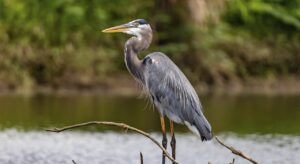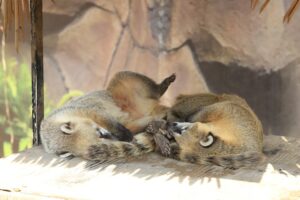The Mojave National Wildlife Refuge is a vast desert landscape in southeastern California. It is federally protected as a national wildlife refuge and is part of the National Park System.
The vast desert areas of the Mojave National Wildlife Refuge include elements of three of the four major deserts of North America: the Mojave, Great Basin, and Sonora. The reserve’s remarkable ecology is due to its unique geology…
The desert is home to old mountain ranges, sand dunes, large table mountains, and volcanic features such as cinder cones, domes, and lava flows; these features contribute to the remarkable beauty of the landscape. The oldest rocks in the preserve, found in the Clark Mountains, are 2.5 billion years old.
The spring and fall months usually have the nicest weather in the park. Altitude greatly affects temperature. Low elevations reach March daytime highs in the 70s. (°F) and overnight lows in the 40s. Highs over 100 °F (38 °C) can last into October and usually start in May. May highs in the mountains are in the 70s, while lows are in the 50s. With daily highs in the 50s and 60s, winters can bring low temperatures and sporadic snow conditions.
Things to see
Upper Dome. A wide sloping highland dome, the erosional remnants of granitic plutons that formed deep beneath the Earth’s surface. Best viewed from the Teutonia Peak Trail, which leads through what was once the densest concentration of Joshua trees in the world. (heavily damaged in 2020 Fire).
Ivanpah Lake (Ivanpah Windsailing Special Recreation Area). The dried lake bottom used for land-based swimming is located near the preserve boundaries on BLM-managed land.(Permit required for individual use of the dried lake bottom for non-motorized sports.; special permit required for commercial activities, organized groups, competitive events and photography.
Kelso Dunes Rd from Kelbaker Rd. Kelso’s massive dunes are easily accessible by car. (four-wheel drive is not necessary). The second tallest sand dunes in California, up to 700 feet (210 m). They are created by the wind carrying dust and reflecting off the mountain… The top of the highest dune offers a beautiful view of the surrounding desert.
lava tube. Formed by lava 27,000 years ago. Bring a flashlight.
To get there.
By car.
The preserve is easily accessible by I-15 or I-40 east of Barstow, and west of Eagle as well as Las Vegas. There are six freeway exits that provide visitor access…
By public transportation.
Baker, the northwest entrance to the preserve, is served by Amtrak bus service, providing connections to Amtrak trains.


